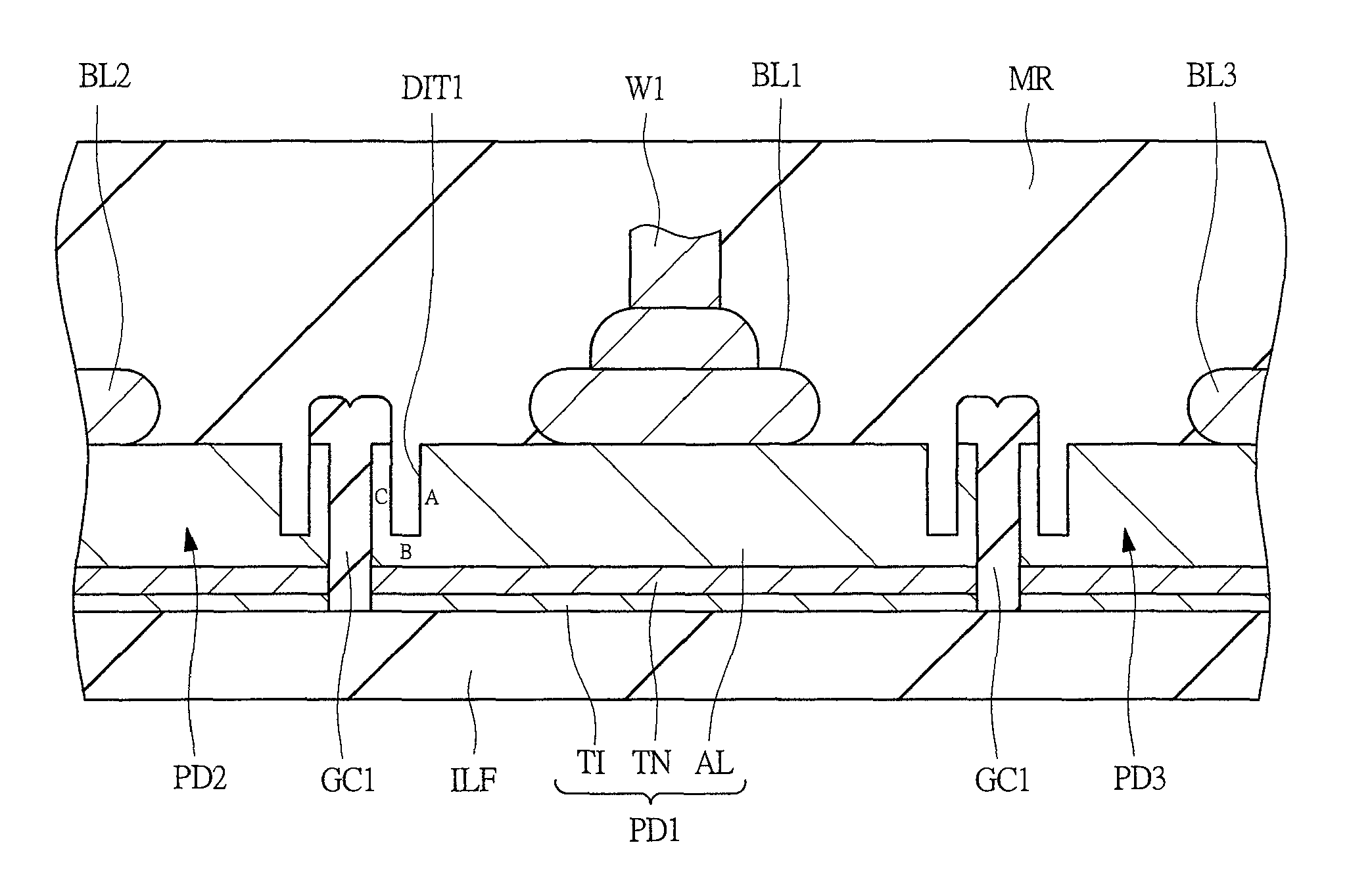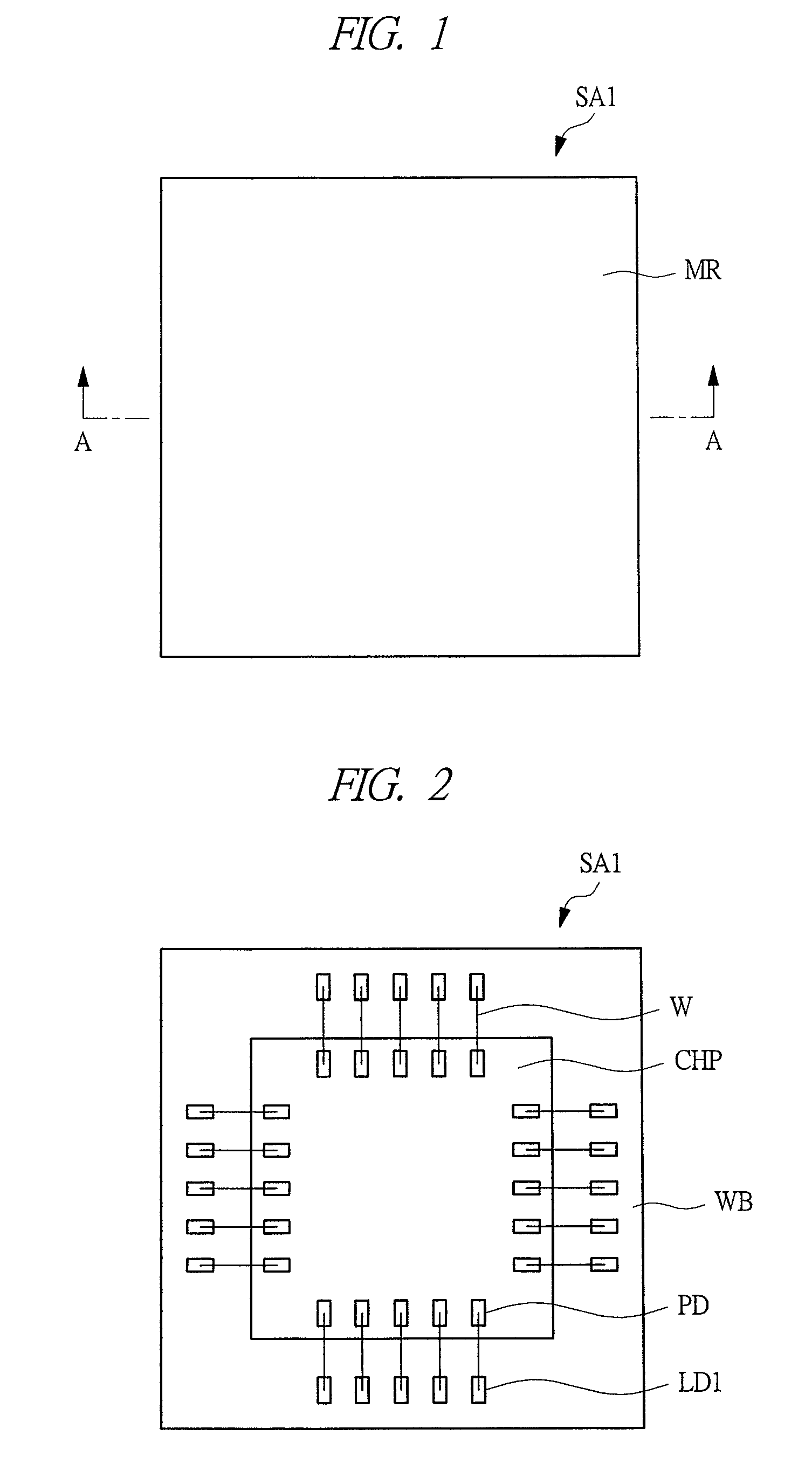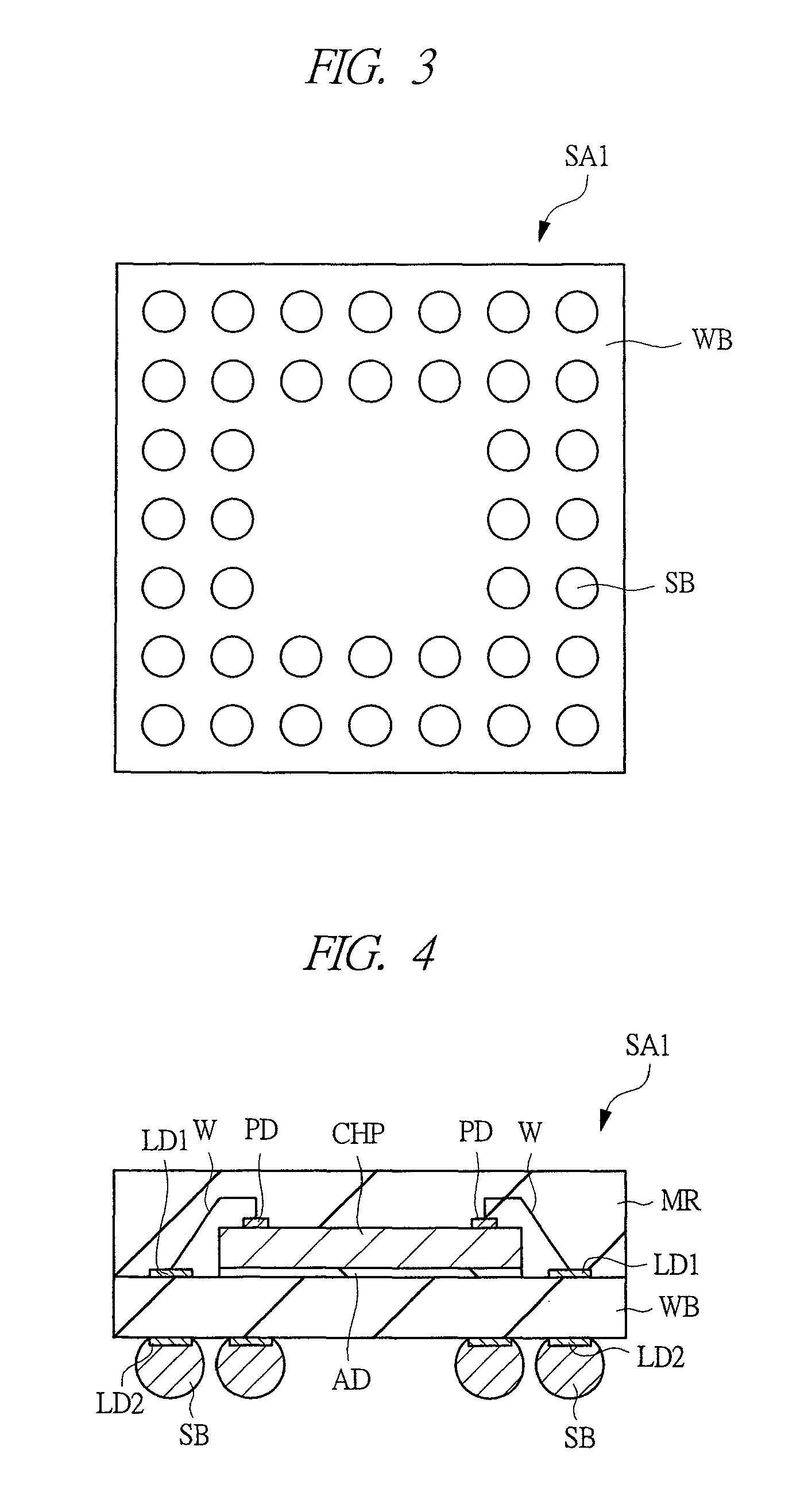Semiconductor device
a technology of semiconductor elements and semiconductors, applied in the direction of semiconductor devices, semiconductor/solid-state device testing/measurement, semiconductor/solid-state device details, etc., can solve the problems of easy short-circuit defect, easy short-circuit defect, short-circuit defect, etc., to maximize the function of the semiconductor element and prevent breakage
- Summary
- Abstract
- Description
- Claims
- Application Information
AI Technical Summary
Benefits of technology
Problems solved by technology
Method used
Image
Examples
first embodiment
[0063]
[0064]As a package structure of a semiconductor device, there are various kinds of ones such as, for example, a BGA (Ball Grid Array) package or a QFP (Quad Flat Package) package. The technical idea of the present invention can be adopted to these packages, and a configuration example of a semiconductor device formed in the BGA package and a configuration example of a semiconductor device formed in the QFP package will be described below.
[0065]First, the configuration example of a semiconductor device formed in the BGA package will be described with reference to the drawings. FIG. 1 is a plan view of a semiconductor device SA1 formed in a BGA package as viewed from above. As illustrated in FIG. 1, the semiconductor device SA1 according to the present embodiment is formed in a rectangular shape, and an upper surface of the semiconductor device SA1 is covered with a resin (sealing body) MR.
[0066]Subsequently, FIG. 2 is a diagram of the semiconductor device SA1 illustrating the r...
second embodiment
[0143]
[0144]FIG. 22 is a cross-sectional view illustrating a connection structure between a pad and a wire according to a second embodiment. Since the connection structure according to the second embodiment illustrated in FIG. 22 is substantially similar to the connection structure in the first embodiment illustrated in FIG. 12, different points between the embodiments will be mainly described. In FIG. 22, step portions DIF1 are formed on end portions of a pad PD1 in the second embodiment. Similarly, step portions DIF2 are also formed on end portions of a pad PD2, and step portions DIF3 are also formed on end portions of a pad PD3. A trench is formed by the step portion DIF1 and the step portion DIF2, and a gap portion is formed on a bottom portion of the trench. At this time, a glass coat GC1 is formed so as to be embedded into the inside of the gap portion between the pad PD1 and the pad PD2 and extend on the bottom portion of the trench. That is, the glass coat GC1 is formed on t...
third embodiment
[0154]
[0155]FIG. 26 is a cross-sectional view illustrating a connection structure between a pad and a wire according to a third embodiment. Since the connection structure in the third embodiment illustrated in FIG. 26 has a configuration substantially similar to that in the first embodiment illustrated in FIG. 12, different points between the connection structures will be mainly described. In FIG. 26, a plurality of pads PD1 to PD3 are each formed of a stacked film composed of a titanium film TI, a titanium nitride film TN, and an aluminum film AL. Here, in the present specification, a combined film of the titanium film TI and the titanium nitride film TN is called “lower layer film”, while the aluminum film AL is called “upper layer film”. In this case, in FIG. 26, a gap portion CE1 is formed between the lower layer film of the pad PD1 and the lower layer film of the pad PD2, and a glass coat GC2 is formed on an upper surface of a portion of the lower layer film of the pad PD1 and ...
PUM
| Property | Measurement | Unit |
|---|---|---|
| temperature | aaaaa | aaaaa |
| temperature | aaaaa | aaaaa |
| temperature | aaaaa | aaaaa |
Abstract
Description
Claims
Application Information
 Login to view more
Login to view more - R&D Engineer
- R&D Manager
- IP Professional
- Industry Leading Data Capabilities
- Powerful AI technology
- Patent DNA Extraction
Browse by: Latest US Patents, China's latest patents, Technical Efficacy Thesaurus, Application Domain, Technology Topic.
© 2024 PatSnap. All rights reserved.Legal|Privacy policy|Modern Slavery Act Transparency Statement|Sitemap



